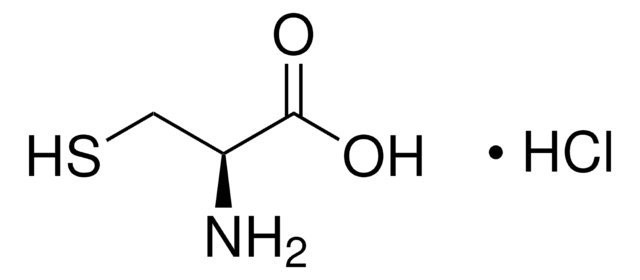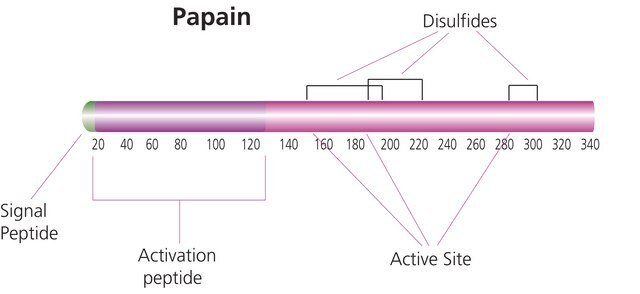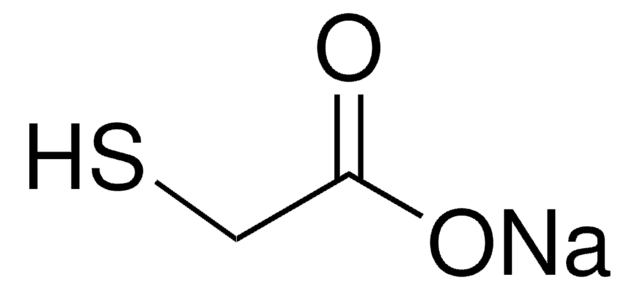Kluczowe dokumenty
C9768
DL-Cysteine hydrochloride
≥95% (TLC), anhydrous
About This Item
Polecane produkty
klasa czystości
anhydrous
Próba
≥95% (TLC)
Postać
powder
metody
cell culture | mammalian: suitable
kolor
white
mp
109-112 °C
rozpuszczalność
H2O: soluble
Zastosowanie
cell analysis
ciąg SMILES
Cl.NC(CS)C(O)=O
InChI
1S/C3H7NO2S.ClH/c4-2(1-7)3(5)6;/h2,7H,1,4H2,(H,5,6);1H
Klucz InChI
IFQSXNOEEPCSLW-UHFFFAOYSA-N
Szukasz podobnych produktów? Odwiedź Przewodnik dotyczący porównywania produktów
Zastosowanie
Działania biochem./fizjol.
Hasło ostrzegawcze
Warning
Zwroty wskazujące rodzaj zagrożenia
Zwroty wskazujące środki ostrożności
Klasyfikacja zagrożeń
Eye Irrit. 2 - Skin Irrit. 2 - STOT SE 3
Organy docelowe
Respiratory system
Kod klasy składowania
11 - Combustible Solids
Klasa zagrożenia wodnego (WGK)
WGK 3
Temperatura zapłonu (°F)
Not applicable
Temperatura zapłonu (°C)
Not applicable
Środki ochrony indywidualnej
dust mask type N95 (US), Eyeshields, Gloves
Certyfikaty analizy (CoA)
Poszukaj Certyfikaty analizy (CoA), wpisując numer partii/serii produktów. Numery serii i partii można znaleźć na etykiecie produktu po słowach „seria” lub „partia”.
Masz już ten produkt?
Dokumenty związane z niedawno zakupionymi produktami zostały zamieszczone w Bibliotece dokumentów.
Klienci oglądali również te produkty
Nasz zespół naukowców ma doświadczenie we wszystkich obszarach badań, w tym w naukach przyrodniczych, materiałoznawstwie, syntezie chemicznej, chromatografii, analityce i wielu innych dziedzinach.
Skontaktuj się z zespołem ds. pomocy technicznej









